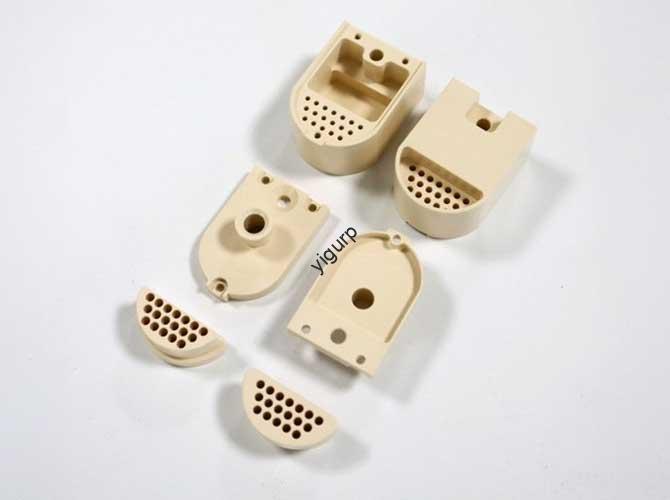Have you ever spent hours 3D Печать a part, only to find it warped, cracked, or misshapen once finished? В большинстве случаев, the root cause is insufficient 3D printing cooling. This critical process controls material temperature during printing to ensure parts solidify correctly—but how does it work? Which cooling method is right for your project? And how can you avoid common mistakes? Let’s answer these questions with clear, actionable insights.
1. The Science of 3D Printing Cooling: Why It Can’t Be Ignored
3D printing cooling isn’t just “adding a fan”—it’s a precise balance of temperature control. Вот простоеcause-and-effect chain to explain its importance:
- Шаг 1: 3D печатные материалы (НАПРИМЕР., Плата, АБС) are heated to 180–260°C to flow through the nozzle.
- Шаг 2: After extrusion, the material must cool quickly but evenly to hold its shape.
- Шаг 3: If cooling is too slow → Material sags, деформация, or fuses with the next layer.
- Шаг 4: If cooling is too fast → Material becomes brittle and cracks.
Суммируя, 3D printing cooling acts like a “freeze frame” for your part—without it, even the best design will fail.
2. Common 3D Printing Cooling Types: Какой выбрать?
Not all cooling methods work for every project. Ниже приведенcomparison table to help you select the right option based on your needs:
| Cooling Type | Ключевые преимущества | Основные недостатки | Идеальные варианты использования | Потребности в обслуживании |
|---|---|---|---|---|
| Fan Cooling | Бюджетный; easy to install/operate; adjustable speed | Less effective for high-power printers; uneven cooling for large parts | Small-to-medium parts (НАПРИМЕР., ПЛА-игрушки, Простые скобки); low-temperature materials | Clean fan blades monthly; replace filters (Если используется) quarterly |
| Water Cooling Systems | High heat transfer efficiency; consistent cooling; works for high-power printers | Risk of coolant leakage; Более высокая стоимость; complex setup | Большие части (НАПРИМЕР., Автомобильные интерьеры); high-temperature materials (НАПРИМЕР., АБС, Петг); industrial-grade prints | Check seals weekly; replace coolant every 6 месяцы; clean tubes annually |
3. Сценарии приложения: Tailoring Cooling to Your Project
Different 3D printing projects demand specific cooling approaches. Let’s useРеальные примеры to illustrate:
- Сценарий 1: Electronic Product Shells → These parts have thin walls and complex details. Использовать on-type cooling technology (cooling channels built near the part surface) to ensure even cooling—this prevents warping that could block USB ports or button holes.
- Сценарий 2: Производство пресс-форм → Molds need uniform thickness to avoid defects. Mold-like cooling technology shortens molding cycles by 30–40% and eliminates hot/cold spots, ensuring the final mold produces consistent parts.
- Сценарий 3: Small PLA Prototypes → A basic fan cooling system (set to 50–70% speed) is enough—PLA cools quickly, so excessive cooling would only make the part brittle.
4. Критические меры предосторожности: Avoid These Costly Cooling Mistakes
Even the best cooling system fails if misused. Here’s alist of actionable tips to prevent errors:
- For Fan Cooling:
- Never blow the fan directly at the printing nozzle—this cools the nozzle too much, causing material clogs.
- Adjust speed based on material: 30–50% for ABS (needs slower cooling), 60–80% for PLA (needs faster cooling).
- For Water Cooling Systems:
- Test for leaks before printing: Fill the system with water, pressurize it, and check for drips (a single leak can ruin your part and damage the printer).
- Use distilled water (not tap water)—minerals in tap water build up in tubes, reducing cooling efficiency.
- General Rule:
- Следите за первым 10 layers—if you see warping, pause and adjust cooling (this saves time and material).
5. Future of 3D Printing Cooling: Что дальше?
По мере продвижения 3D -печати., cooling systems are becoming smarter. Here’s alinear breakdown of upcoming trends:
- Короткий срок (1–2 Years): More efficient fan designs (НАПРИМЕР., dual-blade fans) that reduce noise while improving cooling.
- Mid-Term (3–5 Years): Integrated sensor systems that automatically adjust cooling speed based on part geometry and material (no more manual tweaks!).
- Long-Term (5+ Годы): AI-powered cooling that learns from past prints—if a part warped before, the system will adjust parameters to fix it next time.
Суммируя, the future of3D printing cooling is “set it and forget it”—but with better results.
Yigu Technology’s Perspective on 3D Printing Cooling
В Yigu Technology, Мы помогли 300+ clients fix cooling-related print failures. Мы верим3D printing cooling is often overlooked, but it’s the key to consistent quality. Many clients start with cheap fan systems for industrial parts—this leads to 20–30% rework rates. Наше решение? Custom cooling kits that match material and part size (НАПРИМЕР., water cooling for ABS molds, smart fans for PLA prototypes). This approach cuts rework by 40% and boosts print speed by 15%. Для 3D -печати, cooling isn’t an add-on—it’s a foundation.
Часто задаваемые вопросы
1. My PLA part keeps cracking—Is this a cooling issue?
Да, likely! PLA cools fast, so excessive fan speed (над 80%) makes it brittle. Try lowering the fan speed to 50–60% and check if cracks disappear. Если не, ensure the print bed is at 50–60°C (too cold can also cause cracking).
2. Can I use water cooling for a small desktop 3D printer?
Это возможно, but not necessary. Most desktop printers (НАПРИМЕР., Эндер 3) use PLA or PETG, which work well with fan cooling. Water cooling is better for large printers (over 300mm build size) or high-temperature materials (НАПРИМЕР., нейлон).
3. How do I know if my water cooling system is leaking?
Перед печати, fill the system, turn it on, and run it for 30 минуты (no print). Place a paper towel under tubes and connections—if the towel gets wet, you have a leak. Tighten loose fittings or replace worn seals to fix it.
